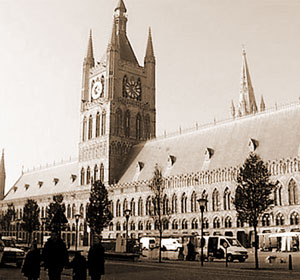Ypres
Cloth Hall Ypres, Maldegem, Adagem

Ypres: Cloth Hall
The truly gigantic cloth hall overlooks the Market Square, the political and economic heart of Ypres. This most beautiful and imposing medieval cloth hall of Flanders was carefully rebuilt after its destruction in the Great War. In the past the building was used as a covered market hall for the famous cloth of Ypres, the product on which the success of the city's economy was based.
The eastern wing and the belfry tower were built as from 1260, the western wing and the side wing followed in 1286. By 1304 the cloth hall was completed. The main façade is 125 m long. On both ends two slender little towers can be seen. In the middle arises the imposing belfry tower with a height of 70 m and a carillon with 49 bells. From the top, when the weather is nice you can have a beautiful view over the surrounding area.
Several statues decorate the facade of the cloth hall. A lot of the original statues did not survive the war. There are also statues of King Albert I and his wife Queen Elisabeth who opened the reconstructed belfry tower in 1934. In and around the cloth hall a lot of remaining old statues and parts of the original building can be seen.
After the destruction of Ypres in the First World War, the town hall was meticulously reconstructed from 1934 until 1958 by the architects Coomans and Pauwels, who followed as closely as possible the original plan. Inside the Cloth Hall is now the Flanders Fields Museum.